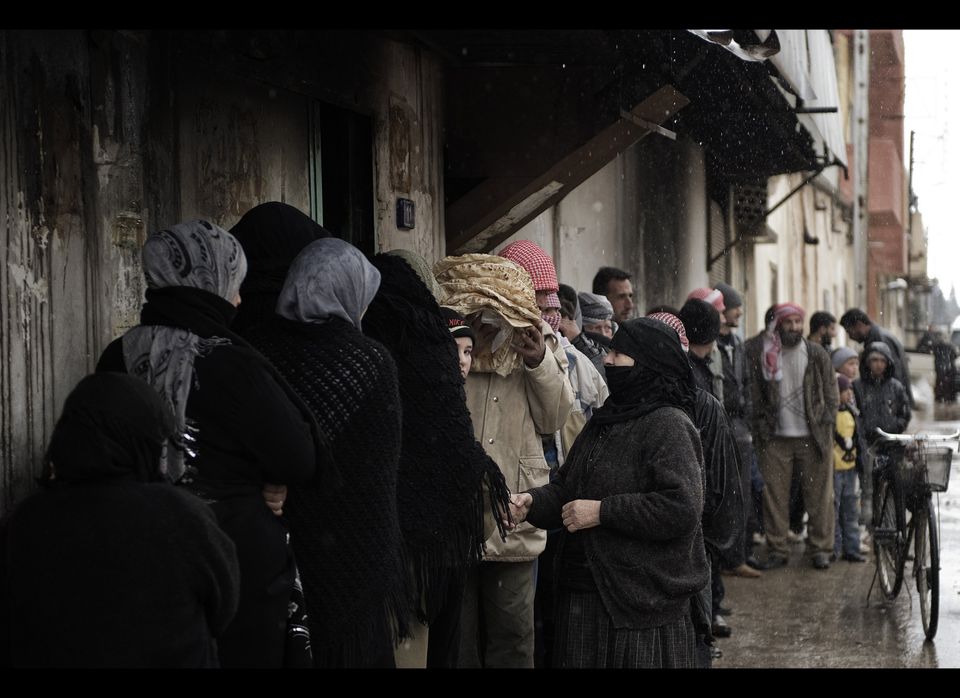
To many, Syria's third largest city was largely unknown until it became, in recent weeks, the site of a bloody siege pitting rebels against government forces loyal to President Bashar al-Assad. In fact, Homs has a rich and variegated history that adds a special dimension to what's happening today. That history helps us understand that rather than being a passive victim, Homs is once again serving as an engine of change, as it has time and again in the past. Known as an Arab principality from the first century B.C.E. onwards, Homs became a vassal of the Roman Empire, but maintained its own royal dynasty devoted to the cult of the Sun. Several of its kings bore the name Samsigeramos, a Greek rendering of the Aramaic phrase "decreed by the Sun." Throughout the second century C.E., Homs was instrumental in propagating in the Roman Empire the cult of the Sun, known in Latin as "Sol Invictus" (Invincible Sun). No later than the middle of the second century, however, when Homs had become fully part of the empire, there were also Christians in the city. Around 150, a native from Homs became bishop of Rome and was later included in the official list of the Roman popes. Toward the end of the second century, a noble woman from Homs' priestly aristocracy, Julia Domna, married the Roman emperor Septimius Severus and put two Syrians on the imperial throne: Heliogabal (or Elagabalus, 218-222) and Alexander Severus (222-235). Though the emperors from Homs gave a boost to the cult of the Sun, Christianity won the day. Eusebius and Nemesius are two famous 4th-century Christians from Homs whose works, written in Greek, are still studied by scholars today. The former was a creative interpreter of the Bible and a renowned preacher; the latter was a theologian and philosopher who sought to reconcile Platonic philosophy with biblical revelation. A precious relic was discovered in Homs in the middle of the fifth century: the head of John the Baptist, allegedly cut off and offered on a plate to the dancing girl Salome, as narrated in the Gospels of Mark and Matthew. It immediately made Homs a popular pilgrim destination. In the sixth century, a young Christian from Homs, Romanos the Melodist, moved to the Byzantine capital Constantinople and became the most celebrated author of liturgical hymns in the Greek Orthodox Church. Homs became part of the Muslim Empire in 637 and continued producing influential authors and scholars, both Muslims and Christians, writing in Arabic or in Syriac or in both languages. Well into the 20th century, Homs had a significant and very visible Christian minority. For Syriac Orthodox Christians, the city became in 1933 their administrative center and the seat of the patriarch, from where the church started to rebuild itself following the heavy losses, in people and property, suffered in Eastern Turkey during and in the aftermath of World War I. The patriarchate was later transferred to Damascus, but Homs and the surrounding towns and villages have retained a sizable Syriac Orthodox minority. Greek Orthodox Christians have a strong presence in the city as well, as do churches of Catholic allegiance. Together with Aleppo (120 miles north of Homs) and Damascus (100 miles to the south), Homs reflects the full depth of Syria's millennia-old history. Its rich history and the vague memory of the Invincible Sun may not be of much help to the city's population in its present struggle or to those of us horrified by the news coming out of this ancient city. But underlying these daily events in Homs, a larger and different narrative is being written, a narrative of many languages, cultures, and religious traditions, of change and transformation. It is a narrative in which time is counted not in months and years, but in centuries and millennia. One hopes this larger narrative will prove that the brutalities of the Assad regime do not have the last word.
Below are some photos from Homs
